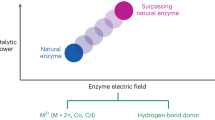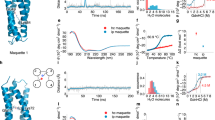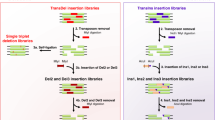Abstract
Genetic engineering is a powerful tool for exploring correlations between structure and function in proteins, but as yet we are unable to use it for effective protein design. One of the most interesting examples, which would seem to be obvious, is reversing the polarity of an ion pair. Changing a positively charged protein group, that provides a strong binding for negative substrates, to a negative group is expected to provide an effective binding site for a positively charged substrate. But several recent experiments on aspartate aminotransferase1,2, trypsin3 and aspartate transcarbamoylase (Schachman, H. K. personal communication) have indicated that polarity reversal is not so successful. Here we argue that the same factors that make the enzyme an effective system for the (−+) pair will make it a much less effective system for the ( +−)pair. We also point out that the unusually low effective dielectric constant (ɛ ≃ 13) for the (−+) interaction is due to its microenviron-ment and this will destabilize a (+−) arrangement having an entirely different dielectric constant (ɛ ≃ 80). The calculations presented here evaluate the energetics of ion pairs in protein active sites on a semiquantitative level. This is particularly important when dealing with strong, functionally important interactions that are difficult to evaluate with macroscopic models.
This is a preview of subscription content, access via your institution
Access options
Subscribe to this journal
Receive 51 print issues and online access
$199.00 per year
only $3.90 per issue
Buy this article
- Purchase on Springer Link
- Instant access to full article PDF
Prices may be subject to local taxes which are calculated during checkout
Similar content being viewed by others
References
Cronin, C. N., Malcolm, B. A. & Kirsch, J. F. J. Am. chem. Soc. 109, 2222–2223 (1987).
Cronin, C. N. & Kirsch, J. F. Biochemistry (manuscript submitted).
Graf, L. et al. Biochemistry 26, 2616–2638 (1987).
Warshel, A. Biochemistry 20, 3167–3177 (1981).
Warshel, A., Sussman, F. & King, G. Biochemistry 25, 8368–8372 (1986).
Warshel, A. & Sussman, F. Proc. natn. Acad. Sci. U.S.A 83, 3806–3810 (1986).
Hwang, J-K & Warshel, A. Biochemistry 26, 2669–2673 (1987).
Warshel, A. & Russell, S. T. Q. Rev. Biophys. 17, 283–422 (1984).
Rao, S. N., Singh, U. C., Bash, P. A. & Kollman, P. A. Nature 328, 551–554 (1987).
Mezei, M., Mehrotra, P. K. & Beveridge, D. L. J. Am. chem. Soc. 107, 2239–2245 (1985).
Arnone, A. et. al. in Molecular Structure and Biological Activity (eds Griffen, J. F. & Duax, W. L.) 57–74 (Elsevier, New York, 1982).
Kirsch, J. F. et al. J. mol. Biol. 174, 497–525 (1984).
Warshel, A., Russell, S. T. & Churg, A. K. Proc. natn. Acad. Sci. U.S.A. 81, 4785–4789 (1984).
Warshel, A. Proc. natn Acad. Sci. U.S.A. 75, 5250–5254 (1978).
Quiocho, F. A., Sack, J. S. & Vyas, N. K. Nature 329, 561–564 (1987).
Wells, J. A., Powers, D. B., Bott, R. R., Craycar, T. P. & Estell, D. A. Proc. natn. Acad. Sci. U.S.A. 84, 1219–1223 (1989).
Sternberg, M. J. E., Hayes, F. R. F., Russell, A. J., Thomas, P. G. & Fersht, A. R. Nature 305, 86–88 (1987).
Russell, A. J. & Fersht, A. R. Nature 328, 496–500 (1987).
Gilson, M. K. & Honig, B. H. Nature 330, 84–86 (1987).
Warshel, A. Nature 330, 15–16 (1987).
Author information
Authors and Affiliations
Rights and permissions
About this article
Cite this article
Hwang, JK., Warshel, A. Why ion pair reversal by protein engineering is unlikely to succeed. Nature 334, 270–272 (1988). https://doi.org/10.1038/334270a0
Received:
Accepted:
Issue Date:
DOI: https://doi.org/10.1038/334270a0
This article is cited by
-
Design of buried charged networks in artificial proteins
Nature Communications (2021)
-
Fluorescence Techniques for Determination of the Membrane Potentials in High Throughput Screening
Journal of Fluorescence (2010)
-
Highly active and selective endopeptidases with programmed substrate specificities
Nature Chemical Biology (2008)
-
Estimating the dielectric constant of the channel protein and pore
European Biophysics Journal (2008)
Comments
By submitting a comment you agree to abide by our Terms and Community Guidelines. If you find something abusive or that does not comply with our terms or guidelines please flag it as inappropriate.



